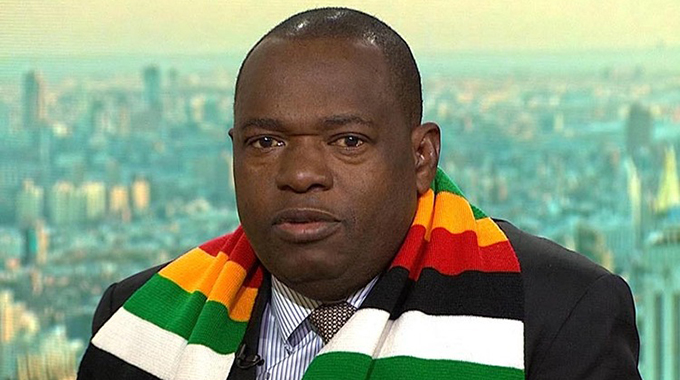Dispelling the myths behind poor Grade 7 results

Elliot Ziwira Senior Writer
The Zimbabwe School Examinations Council (Zimsec) Grade Seven examinations starting next Monday come at a time when there has been an outcry that some provinces, such as Matabeleland North, have become perennial “black sheep” due to dismal pass rates in public examinations year in, year out, blamed on inadequately trained teachers.
The uproar was ignited by the fact that 29 out of the 563 schools that had candidates sitting the 2018 Grade Seven examinations in Matabeleland North Province recorded zero percent pass rate.
The same number of primary schools scored a zero percent pass rate in 2017 in the same province.
The language barrier has been thrown about as the major impediment to effective learning.
Notwithstanding that there is no universal approach to assuage parents through good results, and position the nation state for prosperity by developing the total individual, need arises for probing the matrixes at play in the education puzzle.
Despite budgetary constraints Government has shown commitment to the education sector by recruiting 3 000 teachers in batches starting from January this year, with the bulk of them being deployed to Matabeleland provinces.
With the national teacher shortfall at between 12 000 and 13 000, as revealed by Primary and Secondary Education Minister Professor Paul Mavima, which has seen the teacher-pupil ratio waning to 1:165 in some cases, against the recommended 1:30 ratio, the recruitment may appear to be a drop in the ocean, but the fact that it has come at a time Government is keen on tightening the purse strings, is an indication of the seriousness with which authorities take the education issue.
Government has also awarded its employees, the majority of them teachers, a 76 percent salary increment to cushion them from the ever-rising cost of living. Higher Education, Science and Technology Development Minister Professor Amon Murwira indicated that the ethnic card, especially blamed in the Matabeleland region for dismal pass rates at Grade Seven and Ordinary Level, can be addressed through encouraging teachers to be conversant in at least four of the 16 official languages in Zimbabwe —Ndebele, Shona, Tonga, Chewa, Nambya, Shangani, Venda and sign language among them.
However, although the language barrier may be raised in an attempt to explain the perennial poor showing at Grade Seven in national examinations, the issue of pitiable results is not only rampant in Matabeleland provinces. It is a national challenge that goes beyond ethnicity.
It may be well that teachers learn local languages of the areas they are deployed to, and they can if they are willing and committed to, for learning a language is attitudinal. However, it may be effective if the issue of indigenous languages is enforced in primary school.
Before looking at the possible reasons for the poor showing in Matabeleland North schools, it is crucial here to draw comparisons with other provinces to determine whether the language barrier is such an issue.
In Mashonaland West Province there are 429 satellite schools — 232 primary and 197 secondary. Reportedly, in the 2018 national examinations 13 satellite primary schools scored zero percent pass rate in the province.
In the Matabeleland North scenario, the poor showing is attributable to teacher shortages and lack of teaching materials, since most of the schools were new and small, with a staff complement of three teachers teaching across grades, hence the need to acquaint the teachers with necessary skills.
In the Mashonaland West case, satellite schools do not fall into the category of small schools, as some are said to have enrolments of over 1 000 learners. Poor results are attributed to resource constraints, which include shortages of trained teachers.
In 2014 Bulawayo Province scored the highest overall pass rates in Grade Seven, with Masvingo coming second, Matabeleland South third, and Harare on fourth position. Matabeleland North was on eighth position ahead of Mashonaland West and Mashonaland Central on ninth and tenth positions, respectively.
After dominating in Grade Seven examinations results three years in a row between 2012 and 2014, Bulawayo fell to the bottom in 2015 and eighth in 2016. Matabeleland South came sixth in the Grade Seven examinations in 2018.
That the reason for failure is attributable to non-Ndebele and non-Tonga-speaking teachers in Matabeleland North and Matabeleland South does not hold water when scrutinised against the background of the good results obtained in Bulawayo at Grade Seven, O-Level and A-Level, before slumping between 2015 and 2018. Both Matabeleland North and Matabeleland South recorded better overall results ahead of Mashonaland West and South provinces before 2017, and Matabeleland South maintains its dominance over the provinces.
If infrastructure, ethnical balance and teacher deployment were the only factors determining pass rates, then Harare Province could be leading throughout.
It is imperative that parents, learners and teachers are on the same page with regards to the new curriculum and its expectations. There is a worrying lack of information on the new curriculum, compounded by scarcity of learning materials and poor infrastructure.
If parents believe that their children fail because of teachers from other regions, who are non-speakers of their mother tongues, they help in raising the affective filter of learning in their progenies, thus inhibiting the learning process.
Imparting education is more than teaching, neither is passive learning enough in developing the complete individual. Instead, effective learning involves both cognitive and psychomotor skills made to interact through a shared vision.









Comments